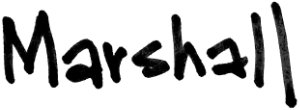How often are you thinking about the concept of Time in what you do?
Sure, you know what time the office opens. There is a scheduled call with a customer at 10:00. If you are really good about time, you might know how long it takes to expose a 230 mesh screen, or trim an order of 48 embroidered polos.
That’s all great, but that’s not what I’m talking about today.
For this article, I want you to concentrate on what is eating your time daily. After all, didn’t you just say the other day “We are so busy, I wish we had more time!”
Today, the focus is going to be on how you actually use time. You can get more handled in a day if you simply rethink some things about how you use time.
First, Measure It
Remember, “what gets measured, gets improved.”
To really understand how to improve, you first have to benchmark what is going on now. How you use time is completely different than how I use time. There isn’t a right or wrong way. I want you to think about what is right for you and your particular circumstances.
Only you can decide that.
You don’t need any fancy tools or expensive gadgets. Grab a new yellow legal pad. This is going to be your best friend for a week or two.
For each line on the pad, your goal is to jot down every different thing you are doing all day. Keep a log. Record your action, the current start time, and the end time of what you are doing. On the far right side, list the total minutes of whatever you were doing.
For Example:
“Checked emails – 8:11 am – 8:37 am – 26 min.”
“Facebook – 8:37 am – 8:45 am – 8 min.”
“Called XYZ Client – Bill Smith – 8:45 am – 9:14 am – 29 min.”
“Bathroom, then got coffee – 9:14 am – 9:28 am – 14 min.”
This is for you, so don’t be embarrassed that you record that you checked Facebook, or use the bathroom. Just record what you did. As much as you can, for every minute of the day. It doesn’t have to be perfect.
Do this for a week or so.
Next, Rate The Activities ABC
You want to rate and prioritize what you are doing. List the types of activities that you normally handle, and add up the total time spent for each type.
If you are in sales, what is the percentage of the day actually selling?
Let’s say that you are a manager. What percentage of the day are you spending improving your staff or solving problems?
What trends do you see?
Are there any surprising habits that you have developed? We aren’t judging…just looking to improve things.
For each type of activity, label them with the following markers:
A. Important
Use the letter “A” to denote anything that is important, critical, or something you should be doing. You are keeping these tasks.
B. Delegate
Use the letter “B” to denote anything that you can give away and delegate. This could be to a person, an outsourced service, or automated software.
C. Stop Doing
Use the letter “C” to denote anything that you need to eliminate completely. What stupid things do you find yourself doing?
Why This Works
I’ve used this technique several times over my career. Often, we are so busy working and getting to the next task that we don’t realize the clutter that is eating our time daily.
You have to make room for the important things.
Think of your day as your crowded garage. There are so many things stuffed into it that you can no longer pull your car inside. Nobody knows where all of this stuff comes from…it just accumulates.
It is the same with your time. Every once in a while you have to “clean your garage” so to speak and eliminate the clutter.
Here’s What Happened Last Time
At the beginning of this year, I was fairly busy. As the weeks and months progressed it became difficult to keep up. There were projects to complete, calls to make, and I started traveling again. It was simply too much, and I was working about 70 – 80 hours a week.
I was using Timeular to track the percentage of the value-added time, and that really helped me understand where I needed to improve.
Segregating the “A” tasks that I wanted to keep from the “B” tasks that I could delegate was incredibly helpful. I also spent some time digging into why those “C” bullshit items were popping up.
Take Action
I created a Google Doc and wrote out a three-page, single-spaced list of “B” tasks that were eating my time, that I thought I could delegate. As I was doing things, I added another line item to this list. It was easy to build out and took about two weeks.
I used that list to find and hire a virtual assistant that was qualified to handle the work that I needed to offload.
Now, huge chunks of my tasks are being completed, but it isn’t me doing them. Of course, I still have to manage the process and outcome. This has freed up my time to focus on bigger, higher-priority ideas.
I’m working on the “What”, not the “How.”
This action to free up your time will improve the quality of your work, your relationships with your colleagues, your family life, and most importantly…your stress level.
Do it.
“Yesterday’s the past, tomorrow is the future, but today is a gift. That’s why it’s called the present.” – Bill Keane
“Time is the coin of your life. It is the only coin you have, and only you can determine how it will be spent. Be careful lest you let other people spend it for you.” – Carl Sandberg
“If you don’t have time to do it right, when do you have time to do it over?” – John Wooden
Help Support This Blog

If you like this blog and would like to support it, you can:
- Buy a book.
- Share this blog on your social media.
- Join Shirt Lab Tribe.
- Subscribe to the Success Stories podcast.
- Watch and like an episode on the Jerzees Adventures in Apparel Decorating YouTube series.
- Get signed up for the new Production Tracker app.
Thanks!





